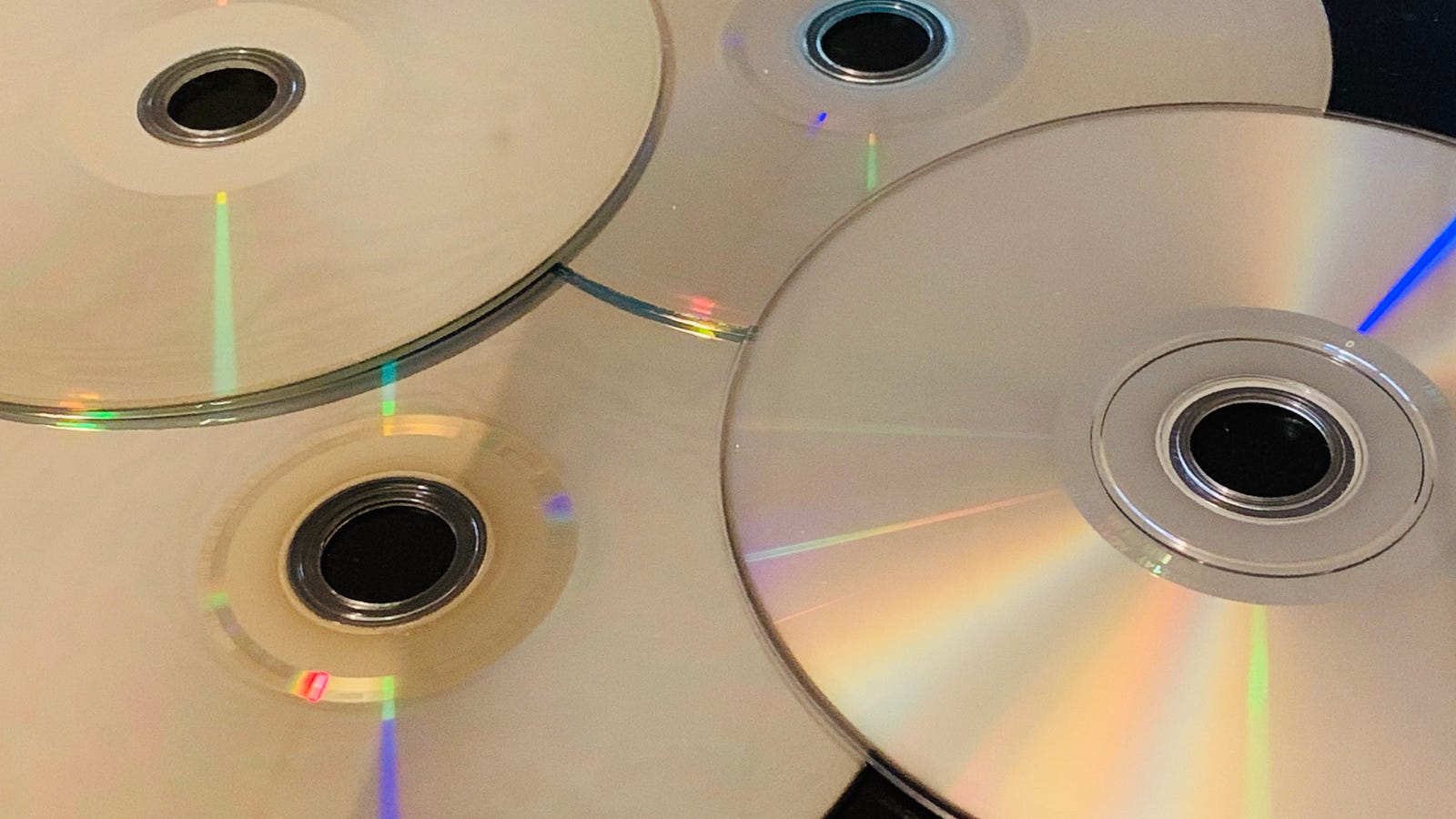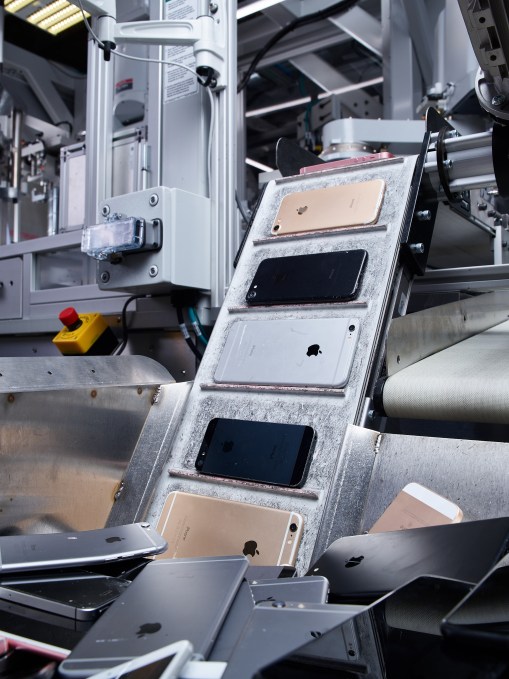|
https://tcrn.ch/2IFscWY
Y Combinator grad, Fuzzbuzz lands $2.7M seed round to deliver fuzzing as service https://tcrn.ch/2VauF2e Fuzzbuzz, a graduate of the most recent Y Combinator class, got the kind of news every early-stage startup wants to hear when it landed a $2.7 million seed round to help deliver a special class of automated software testing known as fuzzing in the form of a cloud service. Fuel Capital led the round. Homebrew and Susa Ventures also participated along with various angel investors including Docker co-founder Solomon Hykes, Mesosphere co-founder Florian Leibert and Looker co-founder Ben Porterfield. What Fuzzbuzz does specifically is automate fuzzing at scale, says co-founder and CEO Andrei Serban. “It’s a type of automated software testing that can perform thousands of tests per second,” he explained. Fuzzbuzz, is also taking advantage of artificial intelligence and machine learning underpinnings to use feedback from the results to generate new tests automatically, so that it should get smarter as it goes along. The goal is to cover as much of the code as possible, much faster and more efficiently than human testers ever could, and find vulnerabilities and bugs. It’s the kind of testing every company generating code would obviously want to do, but the problem is that up until now the process has been expensive and required highly specialized security engineers to undertake. Companies like Google and Facebook are able to hire these kinds of people to build fuzzing solutions, but for the most part, it’s been out of reach for your average company. Serban says his co-founder, Everest Munro-Zeisberger, worked on the Google Chrome fuzzing team, which has surfaced more than 15,000 bugs using this technique. He wanted to put this type of testing in reach of anyone. “Today, anyone can start fuzzing on Fuzzbuzz in less than 20 minutes. We hook directly into GitHub and your CI/CD pipeline, categorize and de-duplicate each bug found, and then notify you through tools like Slack and Jira. Using the Fuzzbuzz CLI, developers can then test and fix the bug locally before pushing their code back up to GitHub,” the company wrote in a blog post announcing the funding. It’s still early days, and the startup is working with some initial customers. The funding should help the three founders, Serban, Munro-Zesberger and Sabera Hussain; to hire more engineers and bring a more complete solution to market. It’s an ambitious undertaking, but if it succeeds in creating a fuzzing service, it could mean delivering code with fewer bugs and that would be good for everyone. Digital Trends via TechCrunch https://techcrunch.com April 18, 2019 at 10:02AM
0 Comments
http://bit.ly/2XrKUFL
New Mueller Report Injustice: It's Getting Delivered to Congress on CDs http://bit.ly/2vclnnT  Congress has long been clamoring for the Mueller report, and the Justice Department is expected to deliver the report later today. With a twist. Congress is getting the 400-page report on some now semi-ancient tech: CDs. Attorney General William Barr held a press conference this morning to present his version of the report. And soon, the Associated Press reports, a redacted version will be delivered to Congress via CD between 11 am ET and noon. It’ll also be available to the public online. As if getting the report and deciphering its salient points amid a sea of redactions weren’t enough of a hurdle, Congress now has to find computers with working disc drives. Apple did away with built-in drives on Macs many moons ago, and they’re no longer quite as common on Windows laptops either. Thankfully, the House Judiciary Committee was reportedly ready for the possibility and has found at least one computer with a working optical drive. That’s possibly because the Department of Justice is known for delivering documents for public records requests on CDs.
As for why CDs happen to be the DOJ’s delivery method of choice, it probably boils down to security. USB thumb drives might have greater storage capacity and are cheap and convenient, but those same benefits make them attractive to hackers. And while the DOJ is unlikely to infect Congress’s computers, it’s not clear what sort of security hygiene politicians are practicing, if any. Cloud-based options—like a password protected Google doc—have the problem where anyone with a password could view it. In other words, it’s just easier to play it safe when it comes to sensitive documents and use hard copies. As Wired notes, certain members of Congress are expected to receive a version of the report with fewer redactions. Delivering them by CD ensures they get to the exact right person and makes it harder to spread sensitive information quickly. Still, the idea of politicians scrambling around to find a working CD-ROM drive is pretty entertaining, even if the contents of that 400-page document aren’t. Digital Trends via Gizmodo https://gizmodo.com April 18, 2019 at 09:51AM
http://bit.ly/2Is2aao
Student Fried $58,000-Worth of College Computers Using 'USB Killer' Device http://bit.ly/2XngjsO  A 27-year-old former college student pleaded guilty on Tuesday to sticking a “USB killer” device into 66 computers at the College of Saint Rose in Albany, New York. On February 14, Vishwanath Akuthota went on a technological rampage, destroying 59 Windows computers and seven Apple computers, and several digital podiums and monitors—all of which had USB slots in which Akuthota inserted a “USB killer” he bought on the internet. According to court documents, obtained by ZDNet Akuthota recorded himself destroying the computers on his iPhone. “I’m going to kill this guy,” Akuthota said as he stuck the device into USB slots. “It’s gone. Boom... It’s dead.” The “USB killer” works by drawing power from the USB port to quickly charge a capacitor, then discharging that power into the USB interface, frying important components. The devices can easily be purchased online, but they’re often advertised as tools meant for testing surge protection. The College of Saint Rose spent $51,009 replacing the computers, and $7,362 on maintenance and investigation costs. Akuthota, an Indian citizen in the country on a student visa, graduated from the College of Saint Rose with an MBA in 2017. The incident took place almost two years later, he was subsequently arrested in North Carolina eight days after the computer raid. When he is sentenced in August, he faces a fine of $250,000 and up to ten years in prison. Digital Trends via Gizmodo https://gizmodo.com April 18, 2019 at 09:45AM
http://bit.ly/2Iue2c6
How to Completely Ignore the Mueller Report Through the Magic of Technology http://bit.ly/2UKlRRm  The Mueller Report, detailing the investigation into Russia’s efforts to help President Donald Trump win the 2016 election, will be released sometime after 11 am ET today. But if you’re sick and tired of hearing about it, which is only natural at this point, there are tools you can use to limit your exposure. Set Up Internet FiltersIf you want to avoid the Mueller Report, the best thing you can do is just get offline. But if that’s not an option, you can set up filters that censor words across the entire internet so that you don’t have to see them. Twitter allows you to mute certain words, so you might start there by muting terms like “Mueller” and “Trump” and “Barr.” Just go to Settings and Privacy and click on Muted Words. From there you’ll be able to add as many words as you like, including “collusion,” “obstruction,” and “Trump is using the office of the presidency to enrich himself and his family in a criminal conspiracy so vast that we hardly even notice it anymore.” And a third-party Google Chrome extension called Advanced Profanity Filter allows you to completely censor words. I’d recommend filtering out “Mueller” and “Barr” at the very least. Add “report,” “president,” and “Russia” in there, if you don’t mind missing out on other content that includes those words. Here’s what the Drudge Report looks like if you only censor “Mueller” using that Chrome extension: Disable Push Notifications From Your PhoneDo you get push notifications from apps like Facebook, Twitter, Apple News, the New York Times, or Google News? You’re going to want to turn those off. Both Android and iOS allow you to turn off notifications for each service individually, but just nuke that shit. No notifications, no information. For iOS, go to Settings > Notifications > Show Previews and set it to never. From the Notifications menu, also scroll to any app that might push the Mueller report in your face and turn notifications to off. On Android, swipe down to display the notification shade and select the Do Not Disturb icon, tap Notifications and select Hidden, which will mercifully release you from the devouring grip of the special council’s shadow. Throw All Your Electronics Into a BathtubHave you set up all the filters and disabled push notifications but are still seeing news leak into your brain? Just chuck your computer and phone into a full bathtub. It’s probably not a great life decision in the long run, but you’ll immediately feel a lot better. Don’t Talk to Other HumansEven if you successfully set up all of the electronic filters that are needed to avoid the Mueller Report news (or just dump your gadgets into a large body of water), you still run the risk of hearing about it from other humans. Avoid human contact at all costs, but if you’re forced to talk with another person, feel free to start every conversation with “I’m trying to avoid news today so please keep this interaction to only pertinent information.” This tactic is easier to get away with while interacting with strangers but might be a bad idea with your partner or any kids. Start a New LifeHave you done everything to avoid the news but still keep hearing about it? The only real solution is to start a new life in a remote area with no access to the internet or other people. You’ve been thinking about it for a long time. You catch yourself staring off into the middle distance, fantasizing about what life would look like if you never had to hear the name Donald Trump again. Have you considered the Canadian wilderness? It’s a big country, and while the entire country is mapped, there are some parts that still haven’t been explored. A person could start a whole new life up there. You wouldn’t even have to see another human being ever again, and the internet would largely become a fading memory. If not now, when? You have options. You can do it. We believe in you. Godspeed. Digital Trends via Gizmodo https://gizmodo.com April 18, 2019 at 09:33AM
http://bit.ly/2XhepKi
Sidestep banking fees with the nationwide launch of T-Mobile Money http://bit.ly/2ZjSnbB 
After a limited four-month trial period, T-Mobile is finally launching its T-Mobile Money banking service to the entire U.S., offering a powerful banking service with extra perks, and none of the usual fees. It’s not your usual banking service. As you might expect, it’s proudly mobile-first, which means a powerful mobile app on your Android or iOS smartphone. Boot up the T-Mobile Money app and you’ll be able to do everything you expect from your banking service, from checking your account balance to sending checks, or even sending direct person-to-person payments. The app also supports Apple Pay, Google Pay, and Samsung Pay, biometric logins — including fingerprint sensors and Face ID — and also comes with the ability to lock a lost debit card or send an alert when your balance is low.   
But a nifty app isn’t the only benefit T-Mobile is offering — users will also get an industry-leading interest rate on their savings. Every customer will get at least a 1.00% Annual Percentage Yield (APY) on their balances. T-Mobile customers who deposit at least $200 a month will receive a 4.00% APY on accounts up to $3,000 — a rate T-Mobile claims is 50 times the average U.S. checking account interest rate. Once you’re above $3,000 then you’ll earn 1.00% APY on every dollar over the threshold. Best of all, T-Mobile is dedicated to preserving as much of your money as possible, and won’t charge any of the usual bank fees. That means no overcharge fees, account fees, or charges for withdrawing your own money. Additionally, if you’re a T-Mobile postpaid customer, then you also qualify for Money’s Got Your Back overdraft protection, which gives you a $50 overdraft without charges, as long as you pay it back within 30 days. It’s not only your money it’s protecting, either, and T-Mobile has confirmed to Digital Trends that it will not sell or share customer data, and neither will Bank Mobile, the bank supporting Money. There’s no need to worry you’re restricting yourself to a digital-only account either. T-Mobile Money comes with a Mastercard debit card, and you can withdraw cash (free of charge, remember) from over 55,000 Allpoint ATMs worldwide — including ATMs from Bank of America, Chase, and Wells Fargo. T-Mobile Money is also FDIC-insured up to $250,000, and comes with 24/7 bilingual support. This has been a longstanding ambition for T-Mobile, with similar efforts launching in 2014. To get started, you can download the T-Mobile Money app for Android or iOS, and sign up with your T-Mobile ID. If you’re also looking to keep a tighter hold on your money as well as boosting it with Money’s APY rate, then check out our favorite budget apps for Android and iOS.
Digital Trends via Digital Trends http://bit.ly/2p4eJdC April 18, 2019 at 09:11AM
https://tcrn.ch/2GrG1po
Apple expands global recycling programs, announces new Material Recovery Lab in Austin https://tcrn.ch/2L2gJnl Apple announced today a further investment in its recycling programs and related e-waste efforts, which includes an expansion of its recycling program for consumers and the announcement of a new, 9,000-square-foot Material Recovery Lab based in Austin, Texas, focused on discovering future recycling processes. The company also reported the success of its existing efforts around recycling and refurbishing older Apple devices, and keeping electronic waste from landfills. The expansion of the recycling program will quadruple the number of locations in the U.S. where consumers can send their iPhones to be disassembled by Daisy, the recycling robot Apple introduced last year — also just ahead of Earth Day. The robot was developed in-house by Apple engineers, and is able to disassemble different types of iPhone models at a rate of 200 iPhones per hour. Daisy can now disassemble and recycle used iPhones returned to Best Buy stores in the U.S. and KPN retailers in the Netherlands. Customers can also send in iPhones for recycling through the Apple Store or through Apple’s Trade In program online.
When Daisy was first introduced, it could disassemble 9 different iPhone models. Now, it can handle 15. This allows Apple to recover parts for re-use. That includes iPhone batteries, which are now sent back upstream in Apple’s supply chain where they’re combined with scrap, allowing cobalt to be recovered for the first time. Apple also uses 100 percent recycled tin in the main logic boards of 11 different products, and notes its aluminum alloy made from 100 percent recycled aluminum reduced the carbon footprint of the new MacBook Air and Mac mini by nearly half. Apple says Daisy can disassemble 1.2 million devices per year, and it has received nearly a million devices through its various programs. It also in 2018 refurbished over 7.8 million Apple devices for resale, and diverted over 48,000 metric tons of electronic waste from landfills. This year, aluminum recovered through Apple’s Trade In program will be remelted into the enclosures for the MacBook Air.
The company announced today another significant investment in its recycling efforts with the opening of a Material Recovery Lab in Austin, which will work with Apple engineers and academia on coming up with more solutions to recycling industry challenges. The lab also houses large equipment, typically found at e-waste facilities, to aid in this research. (See above) “Advanced recycling must become an important part of the electronics supply chain, and Apple is pioneering a new path to help push our industry forward,” said Lisa Jackson, Apple’s vice president of Environment, Policy and Social Initiatives, in a statement. “We work hard to design products that our customers can rely on for a long time. When it comes time to recycle them, we hope that the convenience and benefit of our programs will encourage everyone to bring in their old devices.” Along with the news around recycling efforts, Apple also released its 2019 Environment report, which contains additional information on the company’s climate change solutions. On Earth Day (April 22), Apple will host environmentally themed sessions at its stores and feature environmentally conscious apps and games on its App Store collections, as well. Digital Trends via TechCrunch https://techcrunch.com April 18, 2019 at 09:10AM
http://bit.ly/2GkG1as
The Hunt for Rocket Boosters in Russia's Far North http://bit.ly/2GkuFTT  The boreal forest of the Mezensky district in Arkhangelsk Oblast, Russia, teems with wild reindeer, wolverines, and grouse. But the hunter photographer Makar Tereshin followed there in January—his fifth trip to the region while shooting his stunning series Fields of Fall— was after bigger, more exotic prey: a 65-foot-long Soyuz rocket booster. It crashed among the birches and pines in 1989 after blasting off from Plesetsk Cosmodrome in Mirny some 200 miles south. Constructed in the late 1950s as the world's first intercontinental missile base, the military facility performed more than 1,500 spacecraft launches between 1966 and 2005—more than 60 each year of the 1970s. Much of the launch refuse—boosters, fuel tanks, and fuselage—tumbled into the uninhabited forests and swamps of the Mezensky district, where hunters eventually found it. They never dared scavenge the junk for scrap until the late 1980s, when the Soviet Union began to fall. At first, they told Tereshin, they hacked the metal with axes. Then someone got the bright idea to use a circular saw. Still, it could take more than a week to dismantle a single booster, sometimes sleeping inside for warmth. They sold the metal—aluminum, gold, silver, copper, and titanium—for cash in the capital Arkhangelsk and also hammered it into whatever they happened to need: flat-bottomed boats (dubbed "ракетаs" or rockets), hunting sleds, fencing, gutters, and even saunas—infusing a region otherwise known for its traditional Russian culture and folklore with a touch of space punk. These objects still litter yards and houses in the Mezensky district, though metal scavenging has dwindled in popularity, Tereshin says. In the 1990s, the number of launches at Plesetsk Cosmodrome dramatically decreased, and fewer stages fell. By 2013, those that did mostly landed in the neighboring Komi Republic and Yamal-Nenets Autonomous Okrug. Locals had also grown concerned about the environmental and physiological effects of the rocket fuel heptyl, which researchers say is likely carcinogenic. Plus, the scavengers got old. "People who started to collect metal in the early 1990s are now retired and have pensions," Tereshin says. "They are not really interested in adventures." But Alexei, the hunter Tereshin shadowed in the forest, had at least one more adventure in him. He'd seen a booster in the forest three years earlier and recruited his two grown sons, home visiting, to help dismantle it. They set out from their village on snowbikes before dawn, speeding 40 miles across the tundra through snow, hard winds, and subzero temperatures, before reaching the forest. The booster lay beneath the tall trees, blanketed in white. The men allowed Tereshin to document their work, so long as he didn't reveal their identities or village, since it isn't technically legal. He did so over four days, photographing as they cleared the snow and carved the gray metal into manageable chunks that they tied up to their snow bikes to drag back home. For Alexei and his sons, it was easy money. For Tereshin, it was a fascinating glimpse at a hunt very few people ever get to see. More Great WIRED StoriesDigital Trends via Wired http://bit.ly/2uc60ci April 18, 2019 at 09:09AM
https://tcrn.ch/2Gku1WD
Why we’re looking into the Mueller Report https://tcrn.ch/2vjtzCZ After nearly two years of investigation and months of delays — not to mention partisan bickering the whole time, Special Counsel Robert Mueller’s report on the president’s campaign and Russian interference in the 2016 election is out today. We’re not a politics news site but we’re still looking into it — tech has figured more prominently than ever in the last few years and understanding its role in what could be a major political event is crucial for the industry and government both. The report and discussion thereof is bound to be highly politically charged from the get-go and the repercussions from what is disclosed therein are sure to reach many in and out of office. But there are also interesting threads to pull as far as events and conspiracies that could only exist online or using modern technology and services, and for these the perspective of technology, not politics, reporting may be best suited to add context and interpretation. What do we expect to find in the report that is of particular interest to the tech world? The topic that is most relevant and least explored already is the nature of Russia’s most direct involvement in the 2016 election, namely the hack of the Democratic National Committee email server, attributed to Russia’s GRU intelligence unit, and funneling of this information to WikiLeaks and the Trump campaign. The recent arrest of Julian Assange may prove relevant here. The report will illuminate many things relating to these events, not necessarily technical details — although they may have been furnished by any number of parties — but plans, dates, people involved, and networks through which the hack and resulting data were communicated. Why was this added to Mueller’s pile in the first place? What about Assange? Who knew about the hack and when, and what does that imply? Another topic, which seems more well trodden but about which we can never seem to know enough, is the origin and extent of Russian “troll farm” activity through the so-called Internet Research Agency. We’ve seen a great deal of their work as part of the ongoing barbecue of Facebook’s leadership, and to a lesser extent other social media platforms, but there’s much we don’t know as well. Was there coordination with some U.S. entities? How was the content created, and the topics chosen? Was there a stated outcome, such as dividing the electorate or damaging Clinton’s reputation? Was this contiguous with earlier operations? How, if at all, did it change once Trump was named the Republican candidate, and was this related to other communications with his campaign? The last of our topics of most likely interest is that of the technological methods employed by Mueller in his investigation. Previous investigations of this scale into the activities of sitting presidents and their campaigns have occurred in completely different eras, when things like emails, metadata, and encrypted messaging weren’t, as they are today, commonplace. How did Mueller pursue and collect privileged communications on, for example, private email servers and hosted web services? What services and networks were contacted, and how did they respond? How were the U.S.’ surveillance tools employed? What about location service from tech giants or telecoms? Was other garden-variety metadata — the type we are often told is harmless and which is often unregulated — used in the investigation to any effect? We will be poring over the report with these thoughts and ideas in mind but also with an eye to any other interesting tech-related item that may appear. Perhaps that private server used “admin/password” as their login. Perhaps GRU agents were communicating using a cryptographic method known to be unsafe. Perhaps the vice-president uses a Palm Pre? We’ll leave the politics to cable news and D.C. insiders, but tech is key to this report and we aim to explain why and how. Digital Trends via TechCrunch https://techcrunch.com April 18, 2019 at 09:05AM
https://tcrn.ch/2IrY4Pu
The consumer version of BBM is shutting down on May 31 https://tcrn.ch/2ZjQnAb It might be time to move on from BBM. The consumer version of the BlackBerry Messenger will shut down on May 31. Emtek, the Indonesia-based company that partnered with BlackBerry in 2016, just announced the closure. It’s important to note, BBM will still exist and BlackBerry today revealed a plan to open its enterprise-version of BBM to general consumers. Starting today, BBM Enterprise will be available through the Google Play Store and eventually from the Apple App Store. The service will be free for the one year and after that, $2.49 for six months of service. This version of the software, like the consumer version, still features group chats, voice and video calls, and the ability to edit and retract messages. As explained by BlackBerry, BBMe features end-to-end encryption.
BBM is one of the oldest smartphone messaging services. Research in Motion, BlackBerry’s original name, released the messenger in 2005. It quickly became a selling point for BlackBerry devices. BBM wasn’t perfect and occasionally crashed, but it was a robust, feature-filled messaging app when most of the world was still using SMS. Eventually with the downfall of RIM and eventually BlackBerry, BBM fell behind iMessage, WhatsApp, and other independent messaging platforms. Emtek’s partnership with BlackBerry was supposed to bring the service into the current age, but some say the consumer version ended up bloated with games, channels and ads. BlackBerry’s BBMe lacks a lot of those extra features so consumers might find it a better platform for communicating. Digital Trends via TechCrunch https://techcrunch.com April 18, 2019 at 09:04AM
http://bit.ly/2V2Srxf
Pop 200GB of Storage Into Your Switch, GoPro, or Tablet For Just $25 http://bit.ly/2va0s4L  Best Tech DealsThe best tech deals from around the web, updated daily. Best Tech DealsThe best tech deals from around the web, updated daily.
Want to know something funny? We posted this same 200GB microSD card almost exactly nine months ago for $45, which at the time was an all-time low price. Now, it’s down to $25. That’s the story of storage, and yes, it will continue to get cheaper over time. But if you need more space right now for Nintendo Switch games, GoPro footage, or phone apps, this is unquestionably a great deal.
Digital Trends via Gizmodo https://gizmodo.com April 18, 2019 at 09:03AM |
Categories
All
Archives
October 2020
|



 RSS Feed
RSS Feed
